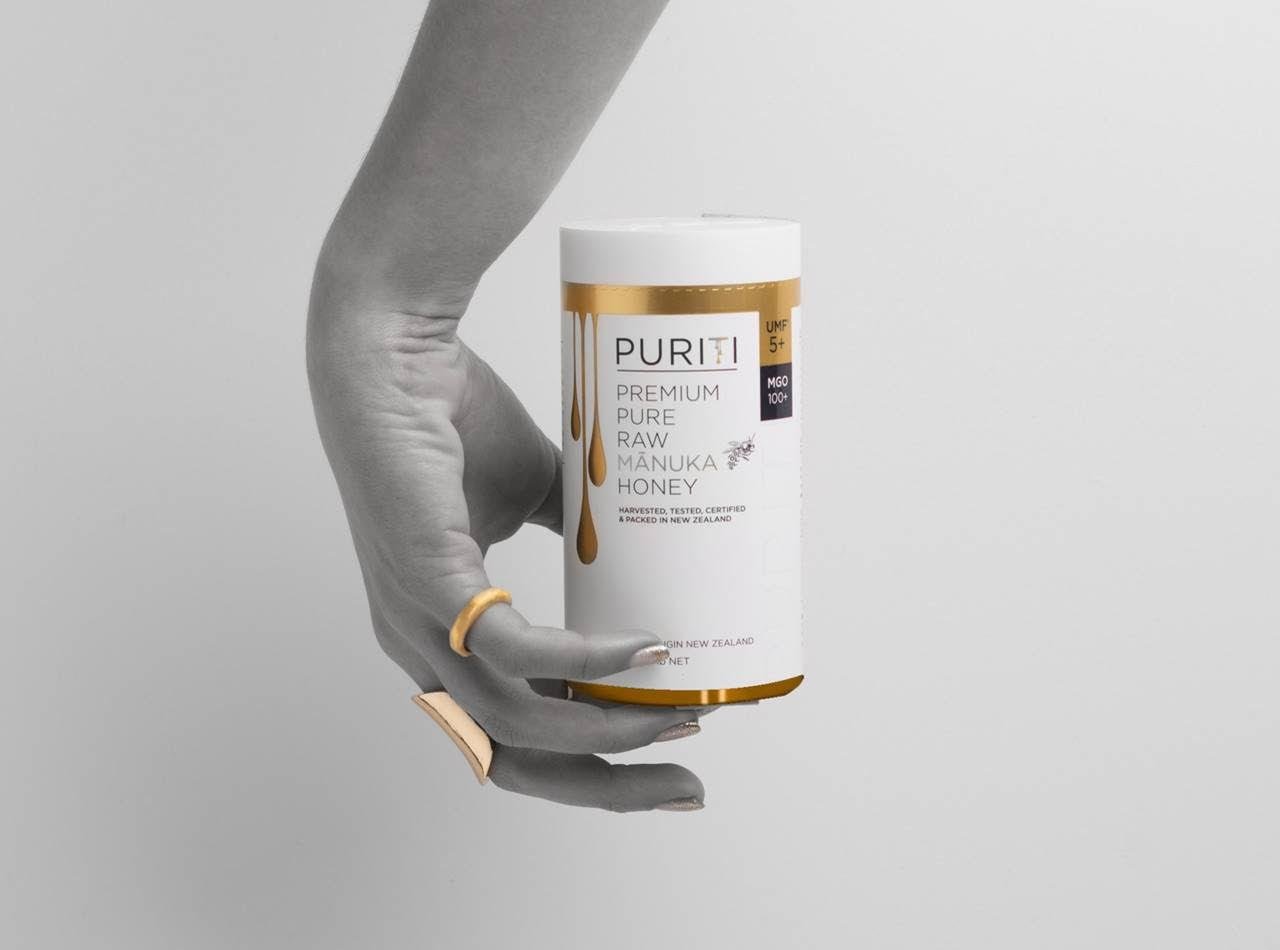Preserving the land of milk and honey: Puriti talks creating the world’s most intensive anti-counterfeit M?nuka honey jar

Idealog: Without giving away any trade secrets, can you describe the design process in coming up with the 11 separate counterfeit security measures in the honey jar? What were the challenges encountered in getting the design right?
Boot: The Puiriti jar, lid and label all had to be designed in conjunction with each other so that they integrated in harmony. The jar and lid join almost seamlessly so that the label can cover the join. The label then has a break line that snaps when twisted. The label also utilises design elements such as invisible ink, high build UV, hot stamp foil and soft touch laminated paper. We also individually laser etch each jar. The combined result is something very hard and very expensive to copy or counterfeit. The jar and lid are proprietary designs exclusive to Puriti.
Why did Puriti feel the need to take such extreme measures – just how bad is the counterfeit M?nuka honey problem overseas? What kind of issues was Puriti running into?
We believe it is a major and growing problem. Not all of the problem is outright counterfeit though. A lot is just deliberate misleading of the consumer. Low grade blended M?nuka is often marketed as the genuine or premium or pure M?nuka honey. When it is far from it. Multi floral M?nuka is a blend of honey types with enough M?nuka? to provide flavour and enough Methylglyoxal to provide a measurable MGO reading level. The labelling in markets outside of New Zealand is often more unclear. Honey that has been packed outside of New Zealand has not undergone the same rigorous testing. As a safe guide, genuine M?nuka Honey will be Mono-floral, minimum UMF5 and over 100 MGO. Good brands will show both on the label to avoid confusion.

What is the global marketplace like for selling M?nuka honey? Are consumers getting mixed messages about origins and authenticity of the different honeys available?
The M?nuka honey market is growing rapidly and demand is very strong but the consumer should show caution when purchasing. There is a mixed message regarding authenticity, testing and grading. Genuine M?nuka must be harvested, tested, certified, packed and labelled in New Zealand. Only Manuka packed and labelled in New Zealand is subject to the comprehensive Ministry of Primary Industries (MPI) Manuka Honey Science Definition test. This is currently only applied to M?nuka Honey exported. It is the only robust form of testing internationally recognised. It tests for four chemical markers and one DNA test for New Zealand M?nuka. The pass marks determine if the honey is M?nuka and Mono Or Multifloral. Only mono floral is the real deal.
What about the situation occurring in Australia – can you describe what’s going on there and how producers are trying to cash in on New Zealand M?nuka honey’s reputation via the Australia Tea Tree Jelly Bush?
Australia has over 100 species of Tee Tree. It has always been commonly called Jelly Bush. Some Jelly Bush Honey has shown measurable amounts of Methylglyoxal, the anti bacteria agent that is naturally created in some Manuka Honey. Australian producers have now renamed their honey M?nuka. This is really faux M?nuka honey. It is not subject to the same comprehensive testing as New Zealand M?nuka honey and it does not have the same properties as genuine M?nuka.
It’s early days, but how has the new design been going so far? Have you received any feedback so far with consumers?
At the moment, it is hard to keep up with the demand. We have new stores wanting to stock Puriti placing orders every day. The factory is flat out trying to keep up. Customer feedback is just incredible. We have addressed concerns. We have increased all the testing. The customer knows the are buying the best of the best.

You’ve spoken out about the export grade standard of Manuka honey needing to be implemented locally – is there also problems occurring with counterfeits in the New Zealand market?
No, the problem in New Zealand is that the standards for our own market are not as strict as they are for export. We now have a higher level of quality required for export. We do not agree that there should be a lesser standard for our home market. Our solution has been to make all Puriti products to a standard that exceeds the export legislation regardless of where they are sold.
Now that Puriti has set a high standard for the classification, packaging and labelling of its products, what would you like to see the rest of the New Zealand M?nuka honey industry do?
The essence or soul of the Puriti brand is based upon lifting standards and continuous improvement. We have created a game changer. If I was to answer honestly, I would say that it would be wonderful if the industry as a whole followed the same direction and embraced higher standards and regulation. Unfortunately, not all producers have the same vision. We may be a lone voice for some time.

You also produce M?nuka crystals as substitutes for sugar and M?nuka honey on-the-go snap packs – would you say these are quite unique products to take to market? Do you think these products will appeal to modern-day consumers?
They’re absolutely unique in the quality way we present and deliver different forms of M?nuka honey to the consumer. We want to expand choice and options. Carrying a jar in your hand bag is not really an option, so on the go packaging gets around this. M?nuka is nature’s super food and if we can make it accessible and easier to use in different forms, then that’s great.





